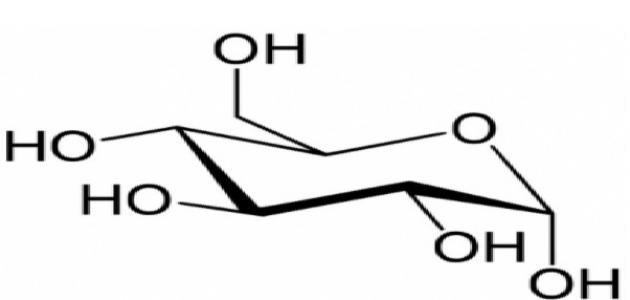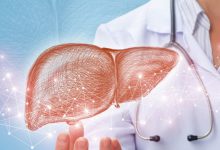Glucose is a Greek word that means sweet, which humans get from their food and use for energy. Its chemical formula is (C 6 H 12 O 6 ), which means it contains six carbon and oxygen atoms and twelve hydrogen atoms, and it is called dextrose or grape sugar. Because it is easily absorbed, blood sugar or blood glucose reaches the cells through the bloodstream.

Food as a source of glucose
Carbohydrate-rich foods such as bread, fruits, vegetables, and dairy products are the main sources of glucose in the body. Through acids and enzymes that break down carbohydrates, the digestive system, especially the stomach, digests food after it enters the body. One of the most important sugar molecules for the body during this process is glucose because it is absorbed in the intestines and goes straight to the bloodstream. Throughout the day, blood sugar levels change. After a meal, it rises, decreases an hour later, and reaches its lowest level before breakfast.
Glucose provides energy
For the body to function, glucose, amino acids, and fat are required. In order for the brain to function properly, glucose is the primary source of energy. In the information processing process, neurons and chemical transmitters require it. By maintaining a stable blood sugar level, the body strives for internal balance and stability, which is why the beta cells in the pancreas secrete automatically. Insulin enters the bloodstream after eating, causing the blood sugar level to rise, as cells need glucose to function, and insulin facilitates glucose entry into muscle cells, fat cells, and liver cells, causing the sugar level to return to normal whenever glucose exceeds the cells’ capacities.
Glucose storage that is excessive
Glucose is stored in the liver and muscle cells as small packets called glycogen after the cells have met their glucose requirements. Due to the fact that the alpha cells in the pancreas secrete the hormone glucagon, glycogen plays an important role in maintaining the body’s internal stability during times of starvation. When blood sugar levels are low, glucagon stimulates the liver to break down glycogen into glucose molecules, which are then absorbed into the bloodstream. Glucose can also be produced by the liver from waste products, amino acids, and fats.
Blood glucose level
To maintain healthy blood sugar levels, a healthy lifestyle can be used by maintaining a healthy diet rich in vegetables and fruits to maintain blood sugar levels within normal limits.
Using the American Diabetes Association’s recommendations, the table below shows the normal blood sugar levels in healthy people and diabetics.
| fasting sugar | Two hours after a meal | |
| Healthy | 70-99 | Less than 140 |
| Diabetics | 80-130 | Less than 180 |
Blood sugar levels are high
It is the accumulation of glucose in the bloodstream, its inability to enter cells, and the constant presence of sugar levels higher than normal. A common symptom of high blood sugar is dry mouth, frequent urination, and excessive thirst, which may be caused by Cushing’s syndrome, steroid medications, or uncontrolled diabetes. There are two main types of diabetes. In type 1 diabetes, the patient does not have enough insulin, while type 2 diabetes occurs when the cells do not respond to insulin.
| fasting sugar | After two hours of eating | |
| blood sugar level | Above 125 | More than 200 |
Blood sugar level is low
The most important symptom of low blood sugar is tremors in the hands and other parts of the body, caused by low blood sugar levels below the normal level, i.e. less than 70 mg/dL. Even though eating a meal or drinking juice may help raise blood sugar levels, there are serious cases that require medical attention, such as loss of consciousness. Low blood sugar can be caused by several factors.
Tests to measure blood glucose levels
Diagnosing diabetes can be done using two types of tests. A urine test and a blood test are required.
Analyses of urine
By filtering the blood, the kidneys return the substances the body needs and remove the wastes. Normally, urine does not contain glucose, but if blood sugar rises above a certain level, some glucose leaks into the urine. A blood test is necessary if glucose is detected in the urine to confirm diabetes.
Tests of the blood
Blood glucose levels can be determined by different types of tests. These are the most important:
Tests of random blood glucose: where samples are taken at any time, but a fasting glucose test is required to confirm diabetes diagnosis.
In a fasting blood sugar test, a sample is collected early in the morning after fasting from food and drink for 8 to 10 hours except water.
An oral glucose tolerance test is rarely used to diagnose diabetes, but it is used to confirm gestational diabetes, and it is conducted in the morning by giving a person a drink containing 75 grams of glucose. Two hours later, a blood sample was taken to determine how the body processed sugar.
Following up at home: This is done by placing a drop of blood from the finger on a special test strip, where the result appears in a short time.
Glucose cumulative test: Glucose cumulative test measures blood glucose levels over the past two or three months, so there is no need to fast before doing it, and if the test value is greater than 6.5%, the patient is considered diabetic.


